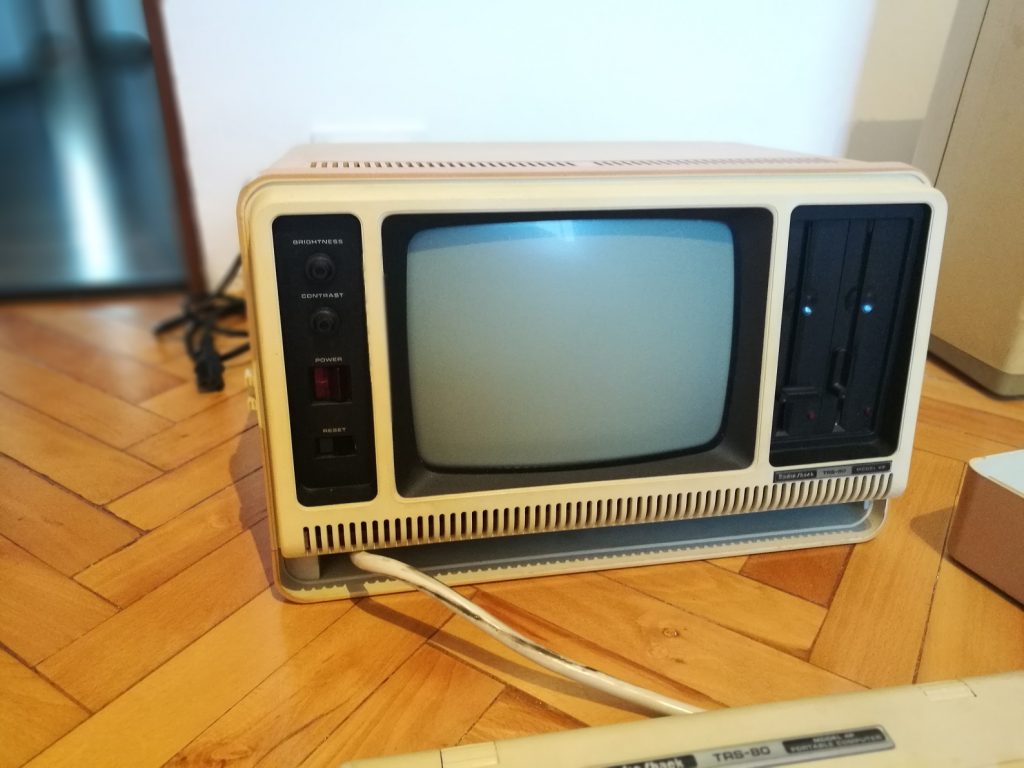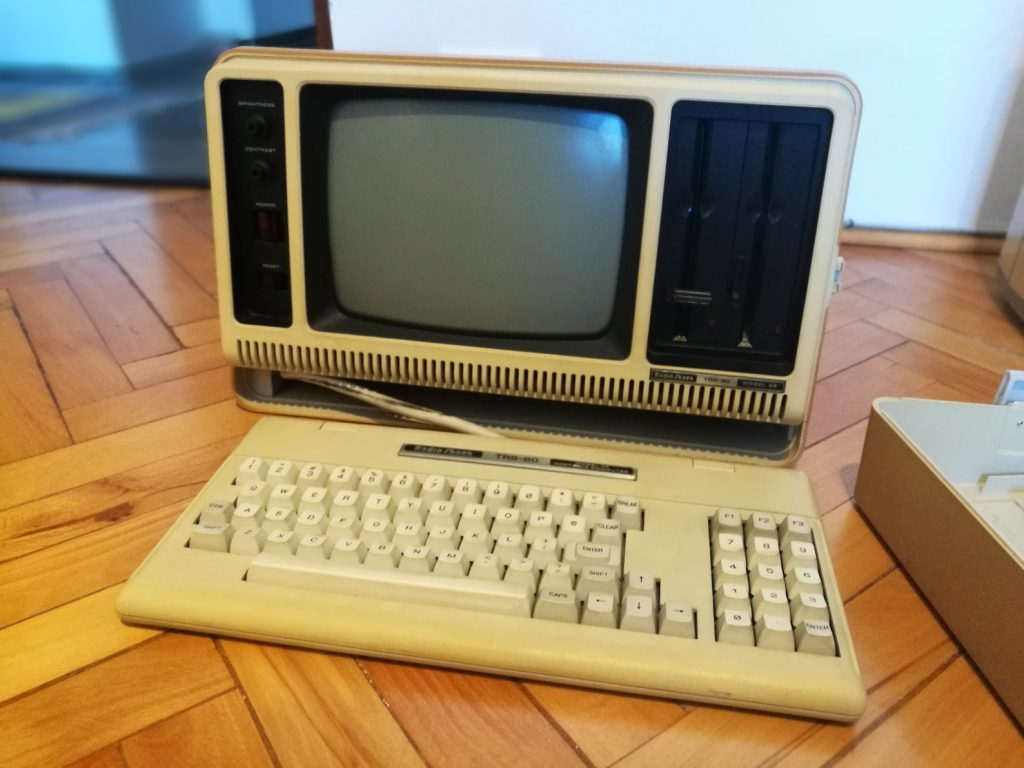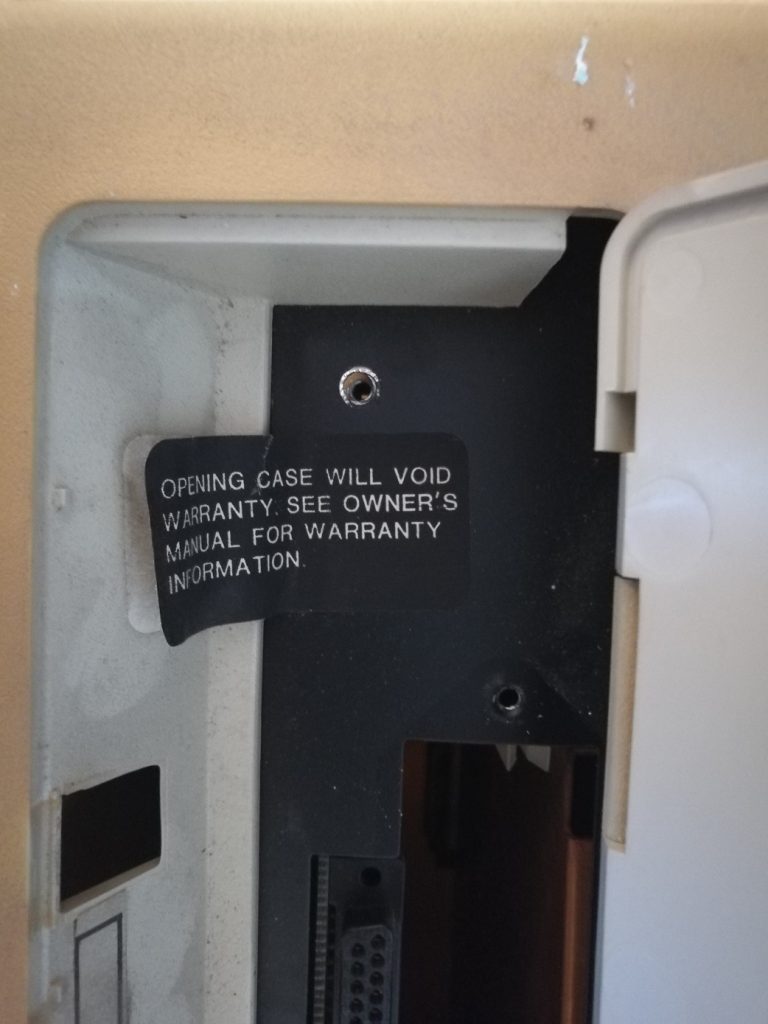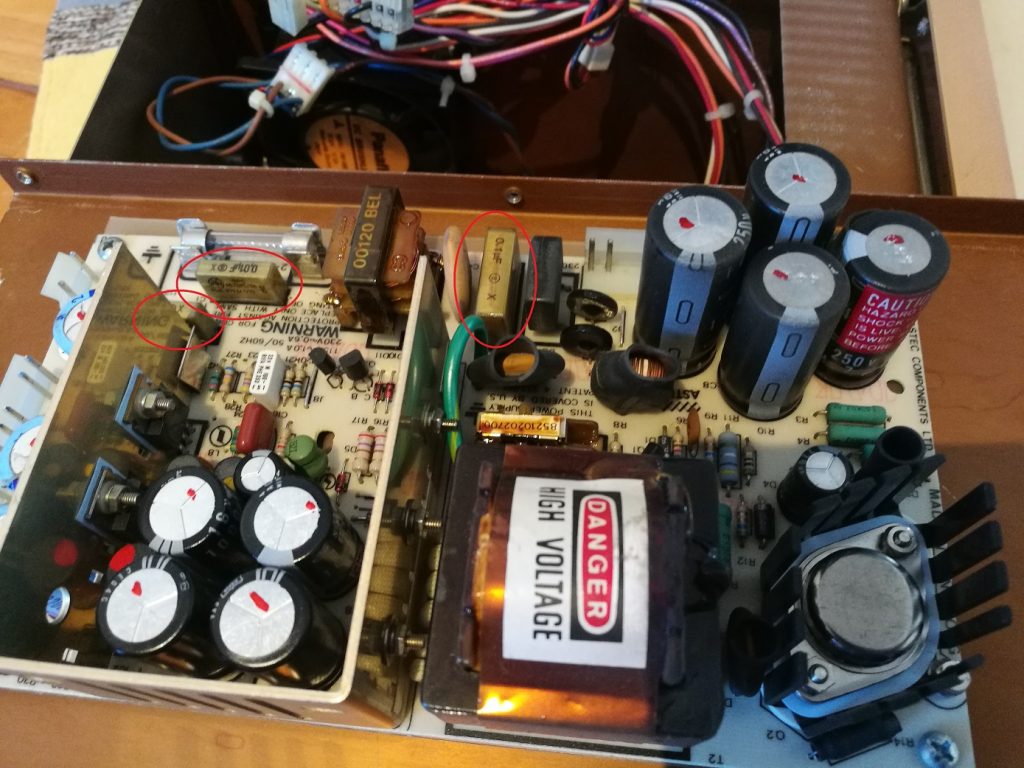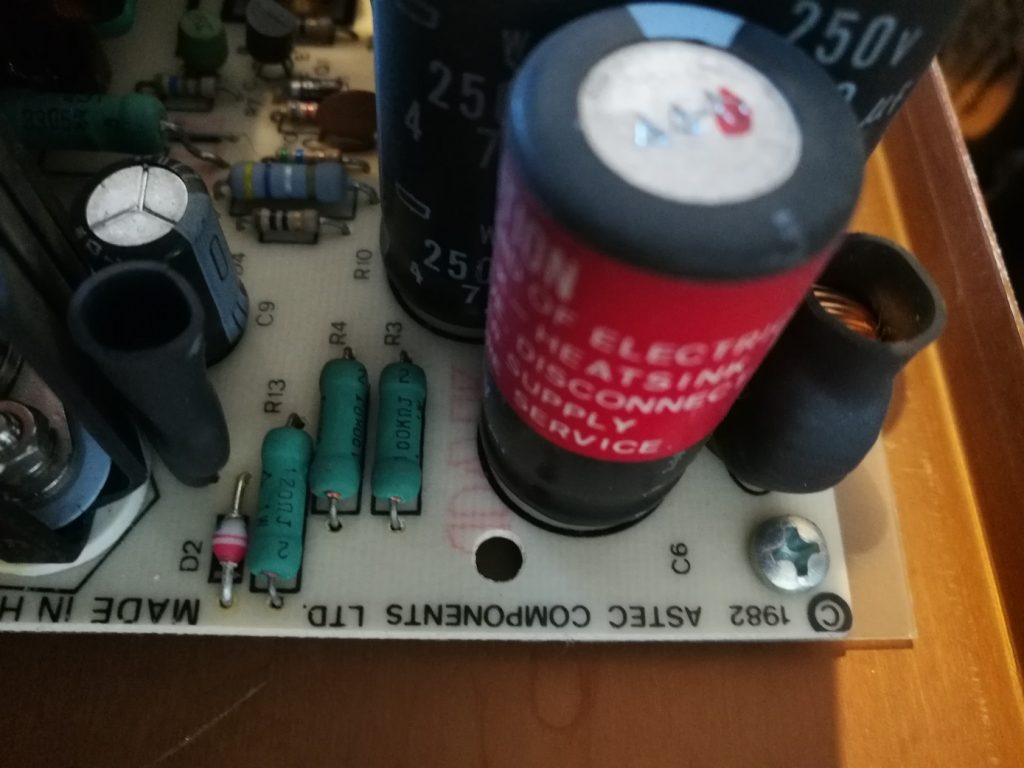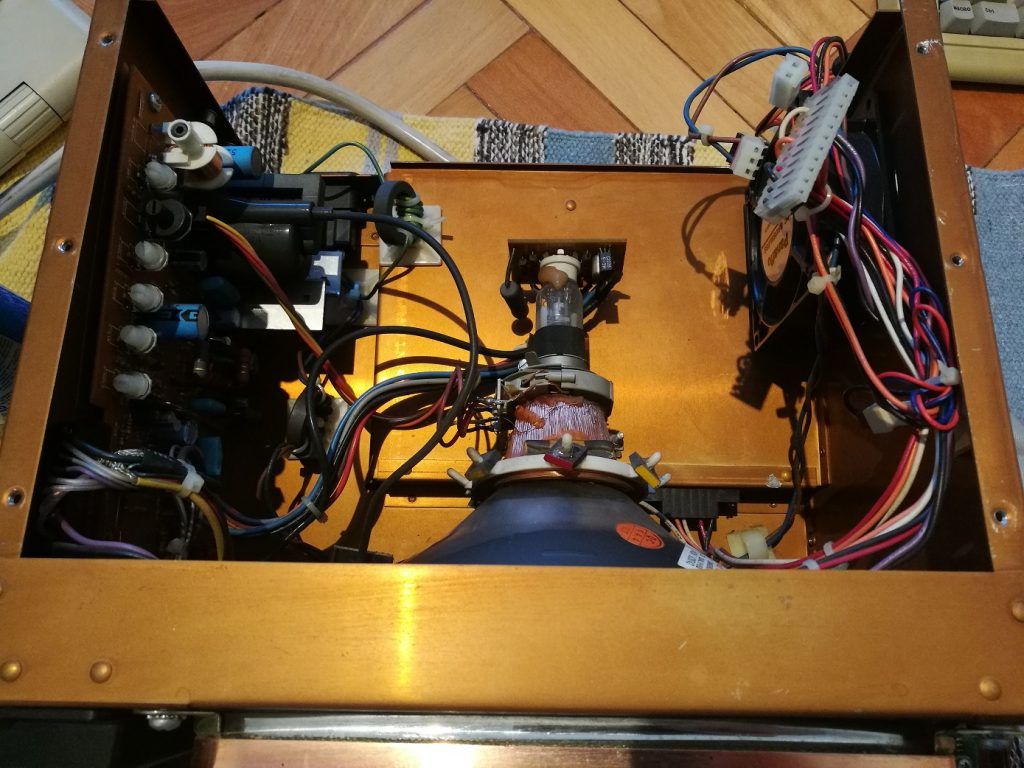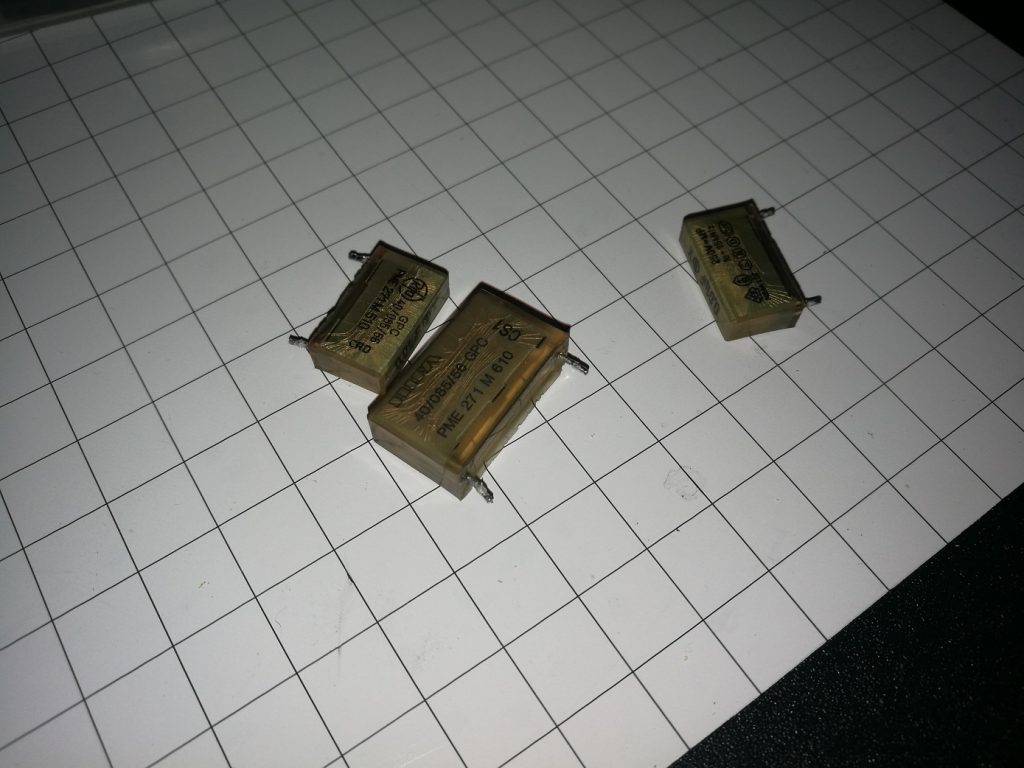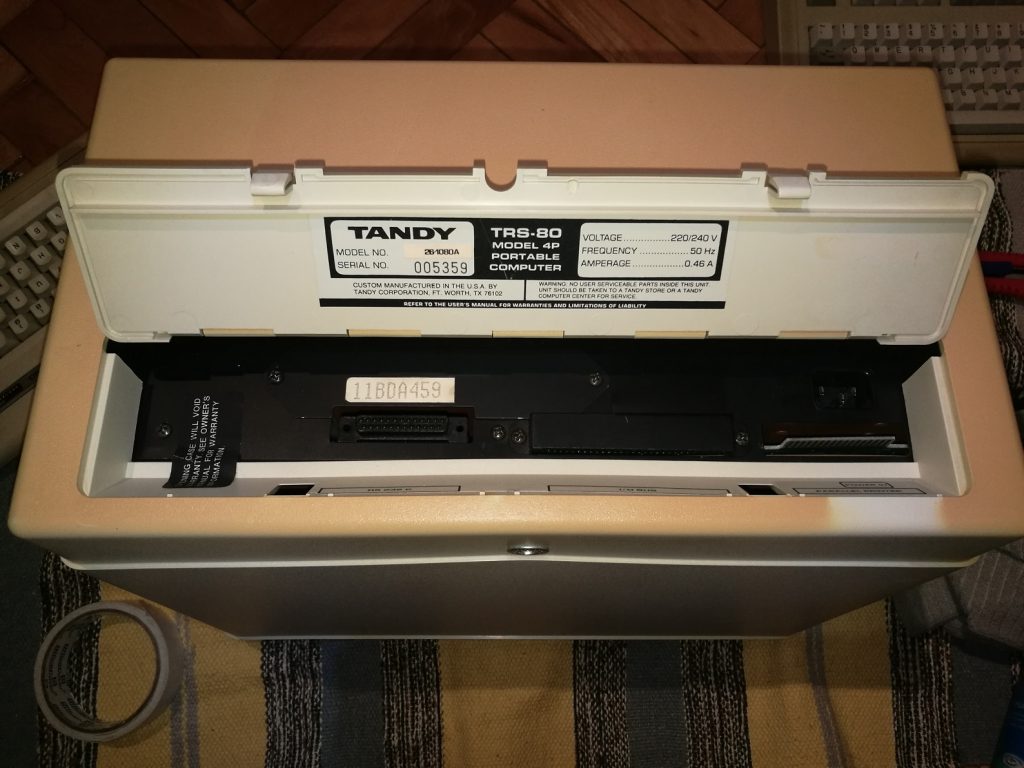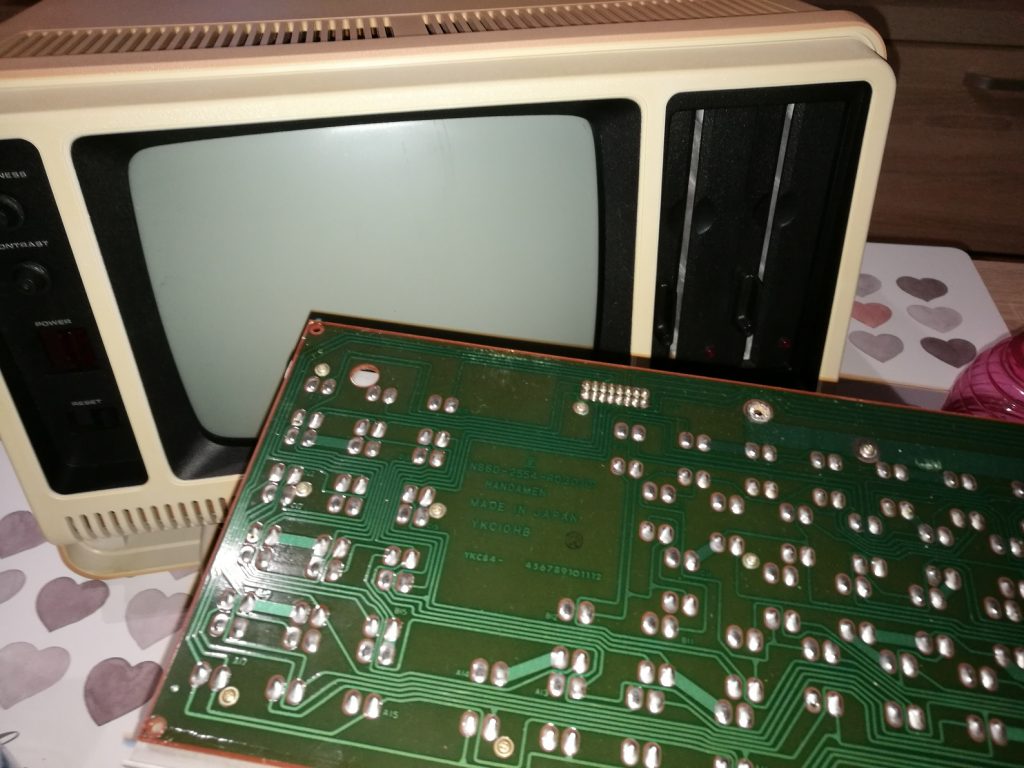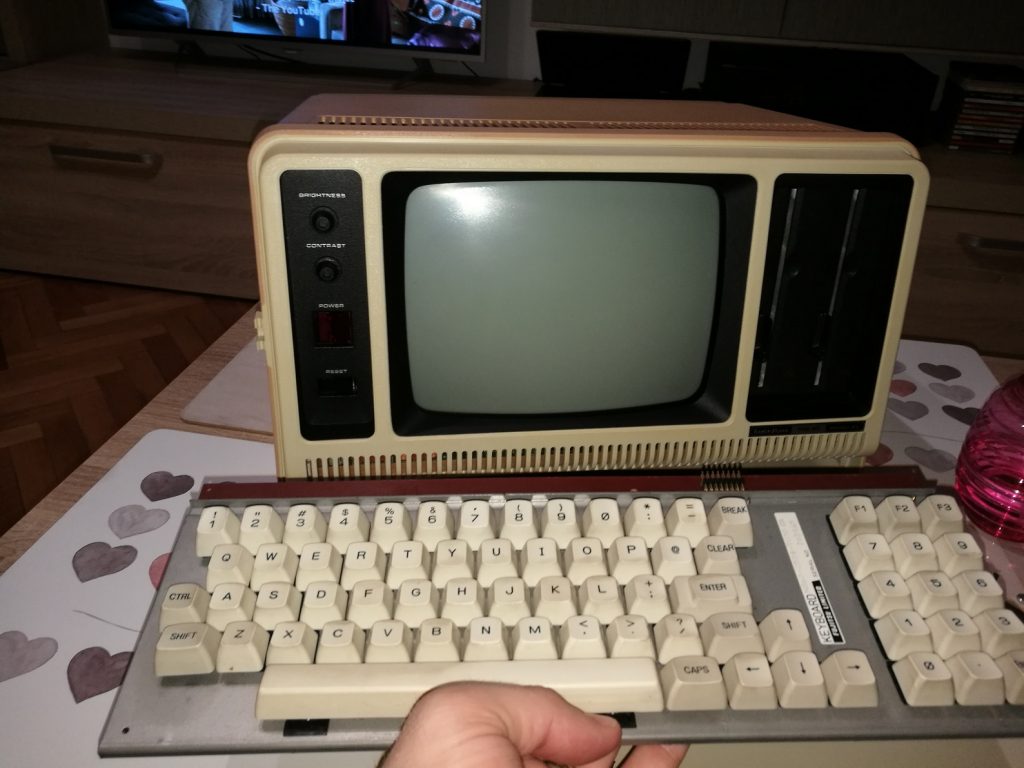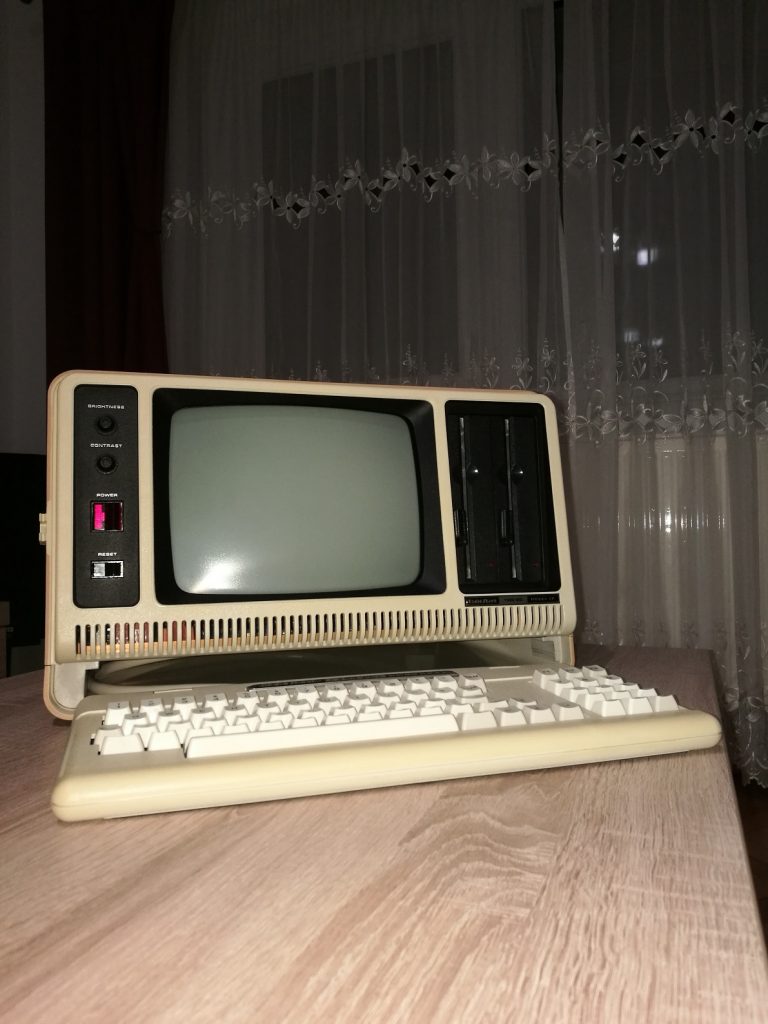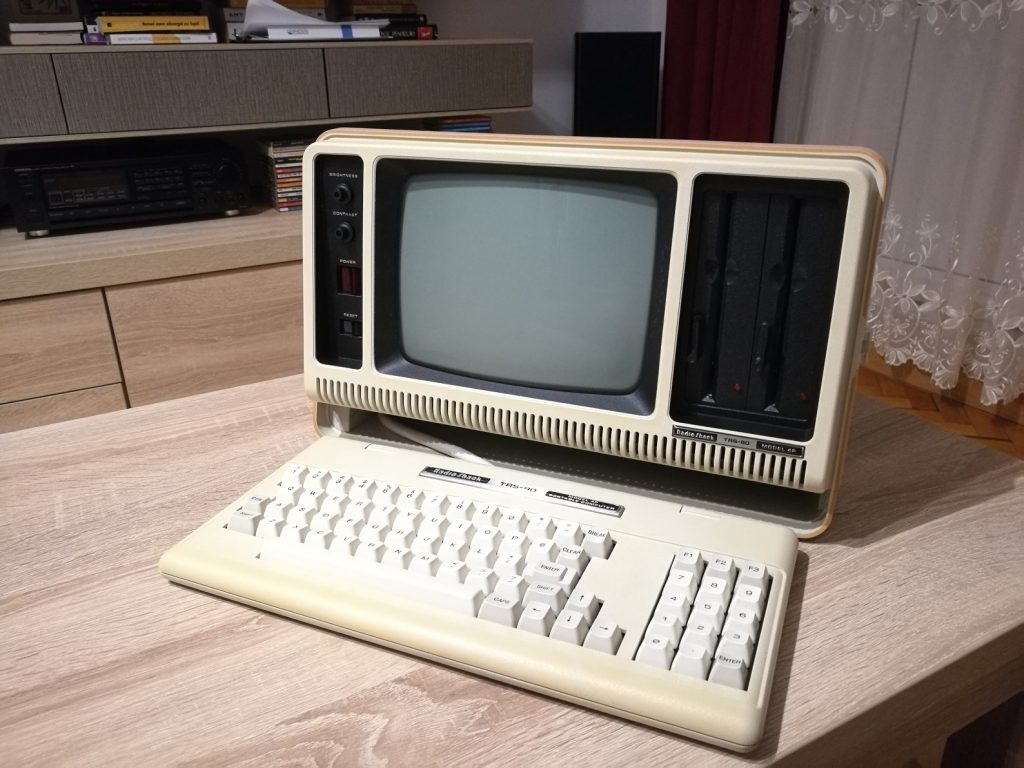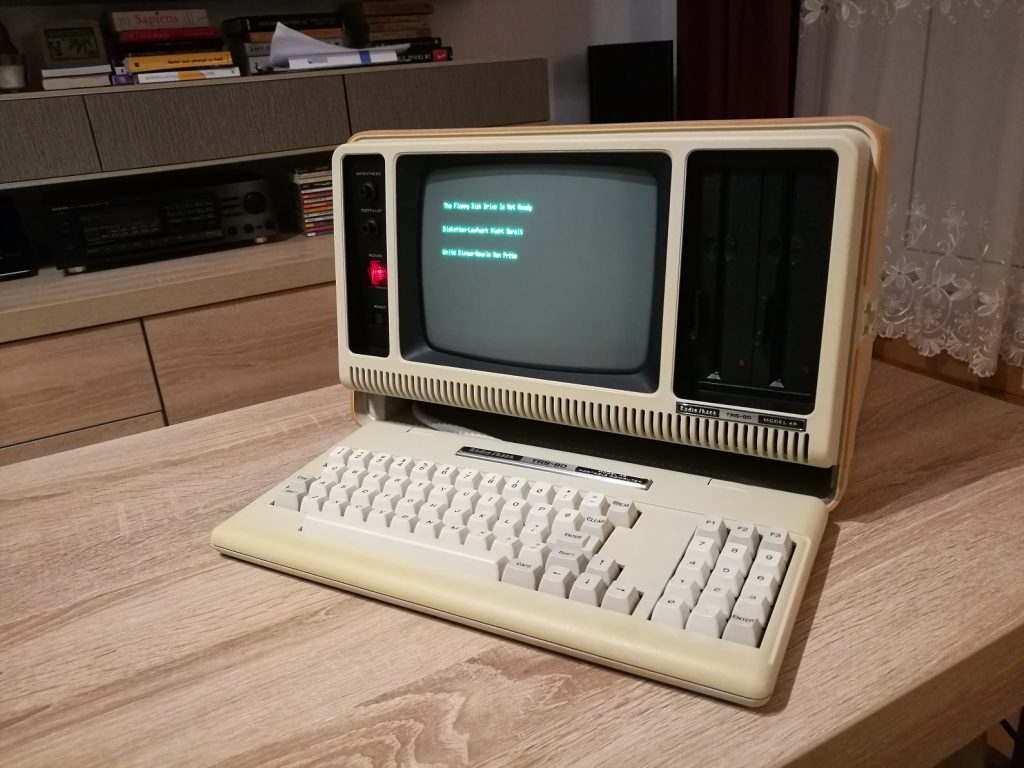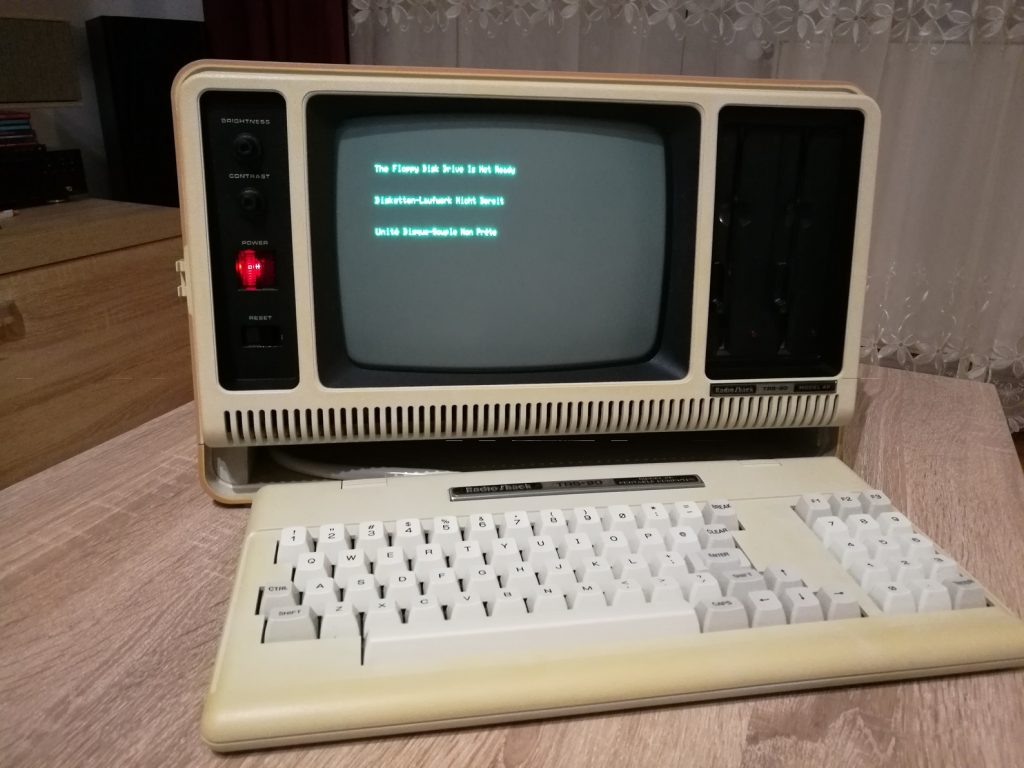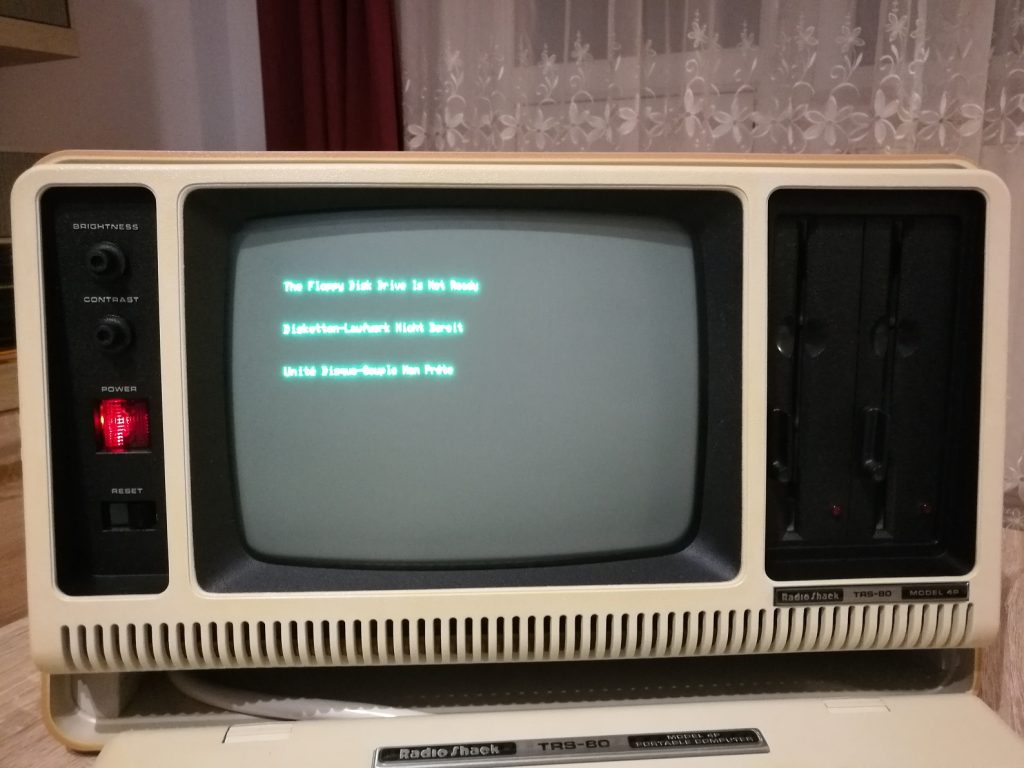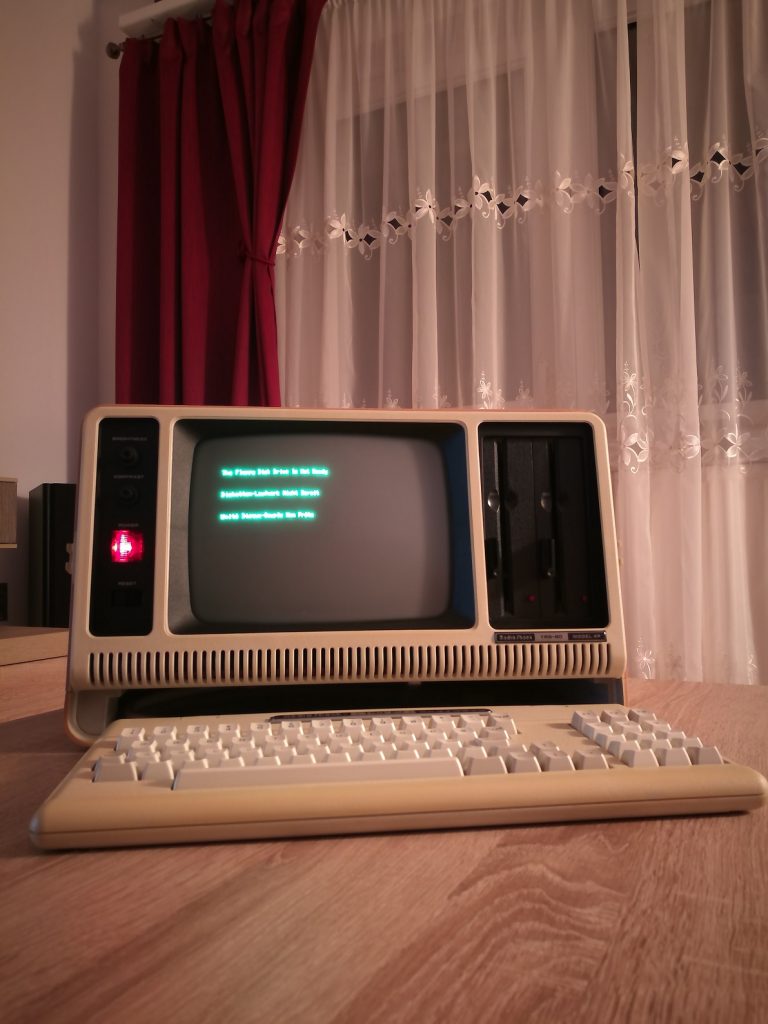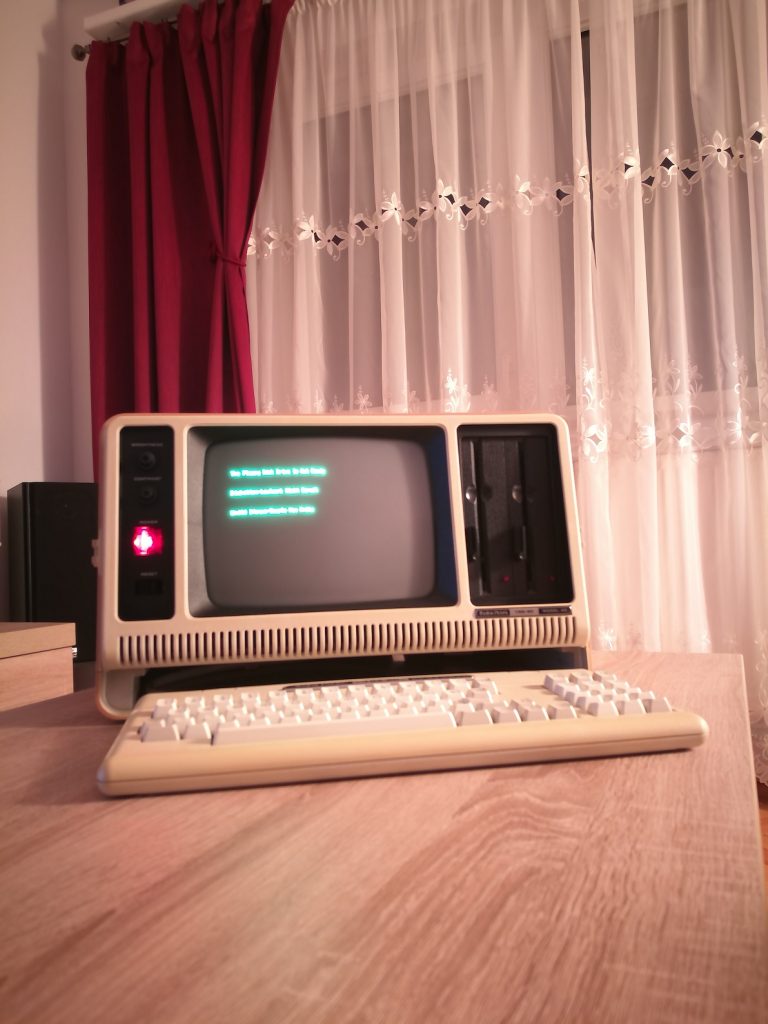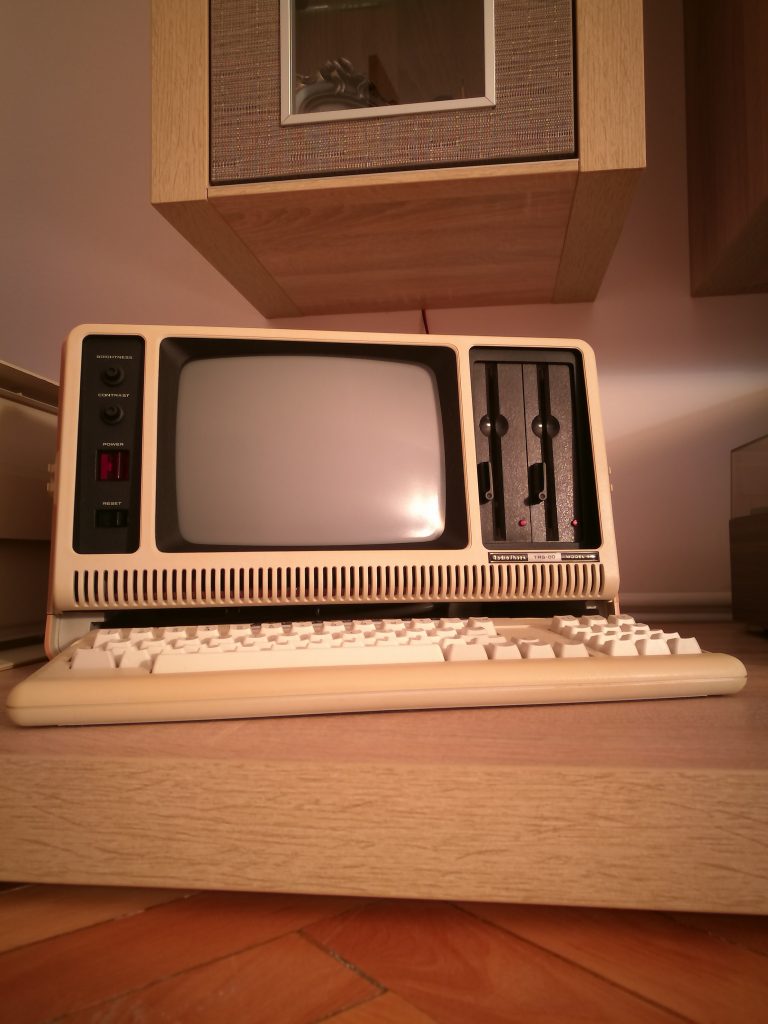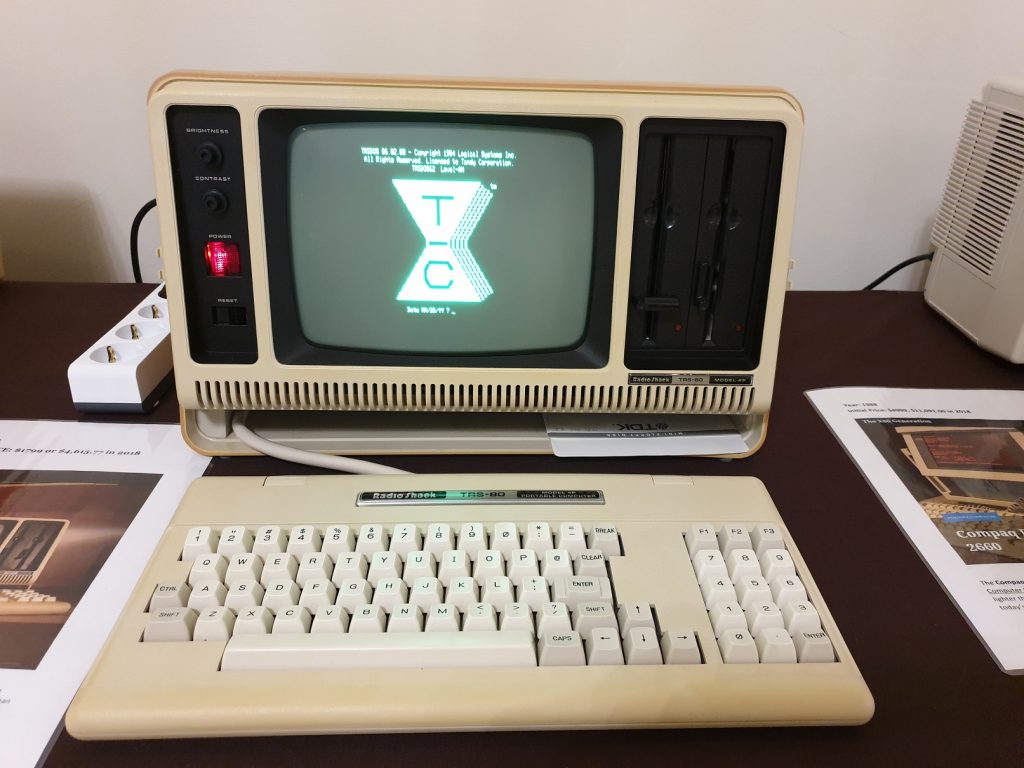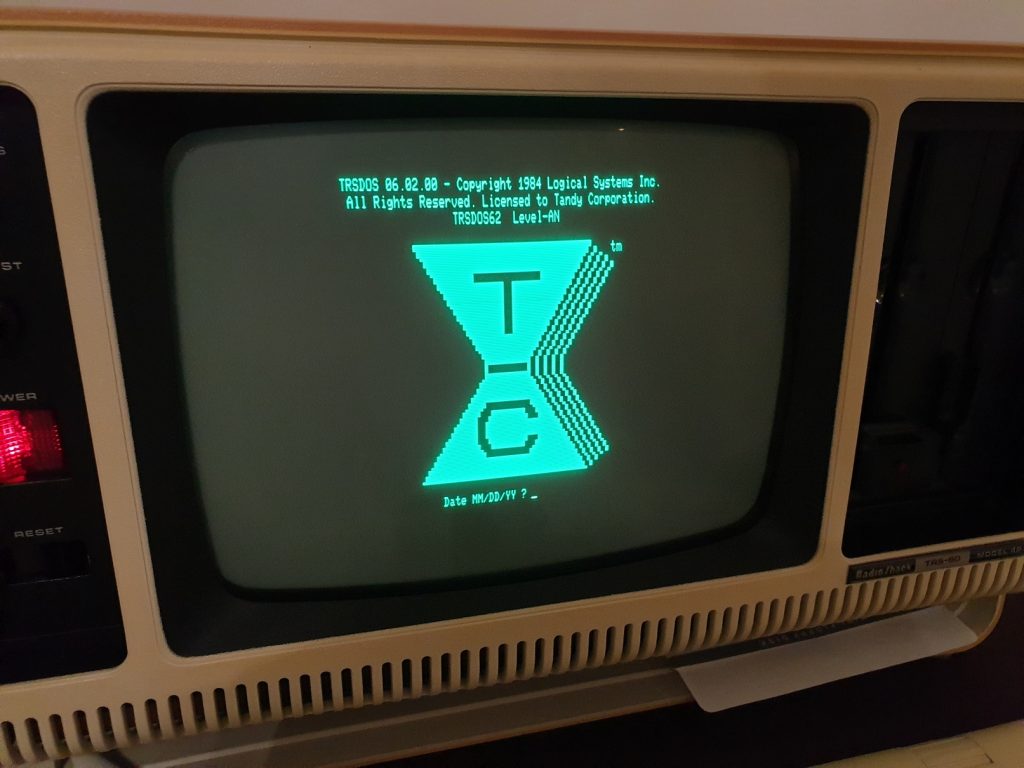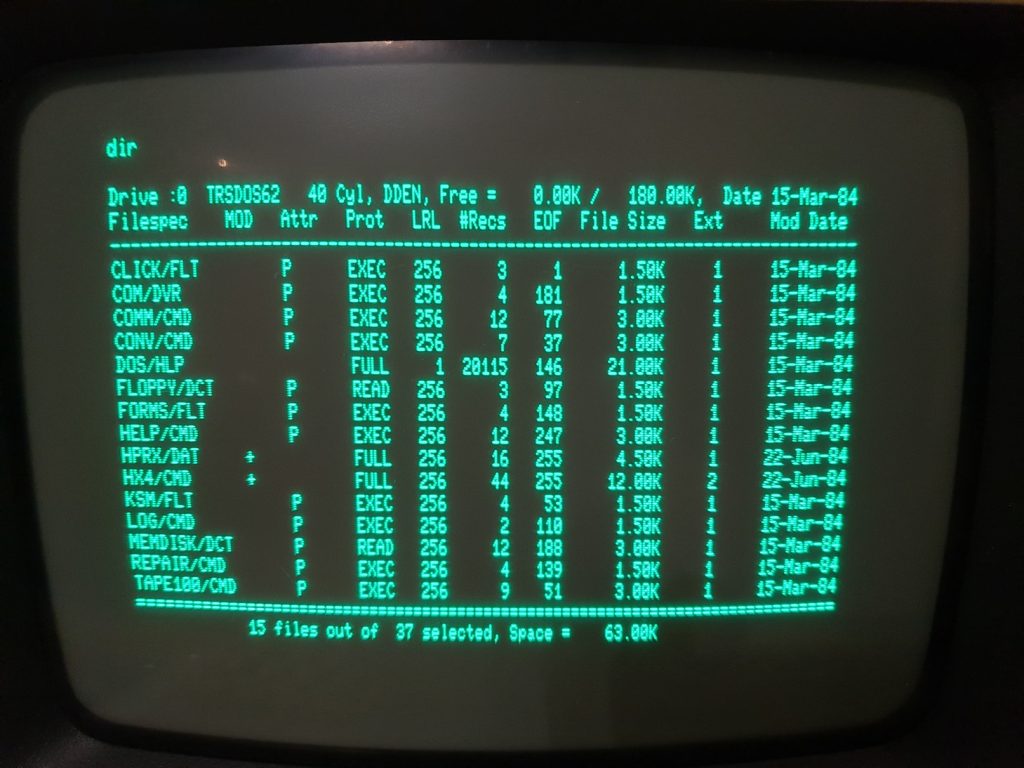YEAR: 1983
INITIAL PRICE: $1,799 or $4,615 in 2018
SN: 005359
The TRS‑80 Model 4P (catalog number 26-1080) was a transportable version of the TRS‑80 Model 4, released on November 15, 1983 for a starting price of $1799. This was $200 less than the price of a desktop Model 4 and $200 more than its nearest competitor, the transportable Kaypro II.
Advertised as “a microcomputer worth carrying about” the Model 4P was introduced this way in a 1984 Radio Shack catalog:
Now get the versatility of our popular TRS‑80 Model 4 desktop computer in a compact system you can take anywhere! The Model 4P is easy to carry—and it’s small enough to stow in overhead luggage racks on planes, trains, or buses. It’s the perfect computer for our mobile society!
Features
The Model 4P offered complete Model 4 compatibility, but in a transportable package with a carry handle. It weighed only 26 pounds and featured a 9 inch screen, two floppy disk drives, and a detachable keyboard with a 16 inch cable that stored below the screen.
In addition to the transportable form factor, the Model 4P differed from the Model 4 in several other ways:
- The Model 4P screen was smaller (9 inches versus 12 inches). The screen was originally black and white, but a later revision changed that to a green screen.
- There was no cassette interface for data storage. There was no cassette version of the Model 4P and cassette storage was no longer widely being used in 1983. The Model 4P routed cassette output to the built-in speaker to work with Model III games.
- Only two internal floppy drives were supported. Some evidence suggests that the Model 4P was originally designed to support two additional external floppy drives through an external drive connector before Radio Shack management, afraid that the Model 4P might hurt sales of other Radio Shack computers, insisted that the external drive support be removed. (Several early news articles mention this non-existent external drive connector.) A popular article by Tsun Tam describing how to restore those external drives was published in the January 1986 issue of 80 Microand later reprinted in the MISOSYS Quarterly.
- There was no BASIC in ROM. Instead of having a ROM containing the Model III BASIC, like the Model 4, the Model 4P had only a small boot ROM. This boot ROM had the ability to load an image of Model III BASIC (normally named MODELA/III) from disk. This meant that the Model 4P could run all Model III programs, although starting some self-booting disks (such as games) required a two-step process of loading the BASIC image and then the disk.
There were several other advantages to the Model 4P boot ROM approach:
- The Model III BASIC image could be customized far more easily than changing a ROM. Radio Shack did create localized versions of the BASIC image for France, Germany, and several other countries.
- The boot ROM could boot from a floppy disk, hard drive, or over the RS-232 port. There were also hooks to boot from an ARCNET network, had Radio Shack ever produced a Model 4P ARCNET card. Booting from anything other than a floppy drive was normally impossible on a Model 4.
Because of the advantages, this same boot ROM approach would have been used by any “Model 5” developed to succeed the Model 4.
Options
Radio Shack sold a number of optional accessories for the Model 4P, including:
- The Radio Shack High-Resolution Graphics Board (catalog number 26-1126), a $249.95 board which provided 640 by 240 resolution graphics.
- The Model 4P Modem Board (catalog number 26-1084), a $149.95 direct connect 300-baud internal modem. Unusually for Radio Shack, the modem was “user installable” inside the 4P.
- The Model 4P Travel Case (catalog number 26-1085), a $24.95 “heavy-duty black vinyl case” with an “inner pocket for manual and diskettes.”
Legacy
Although the Model 4P was much loved by owners, Radio Shack never really managed to successfully promote the computer. Eric Maloney, editor-in-chief of 80 Micro, described the Model 4P as “the computer Tandy forgot that it had made.”
In the 1985 Radio Shack catalog, the price of the Model 4P was reduced to $1299.00. It was widely rumored that it would soon be discontinued, although Radio Shack strongly denied that. But on April 22, 1985, describing the Model 4P as “not a particularly hot seller, ” Radio Shack announced that the price would be reduced to $649.95 until it sold out. It did soon after and the Model 4P was officially discontinued.
I got this machine from a friend a mine who bought it from Germany. This computer is actually brown how much it was exposed to the sunlight and some retrobrite or paint will be necessary.
The computer starts up and works great but there might be a paper capacitor blown as I can feel some burn smell coming out of the power supply`s fan.
The paper capacitors are bloated and smell when AC is plugged in. I had removed them and put new ones. If you do not have replacement caps you can just leave the power supply without them.

